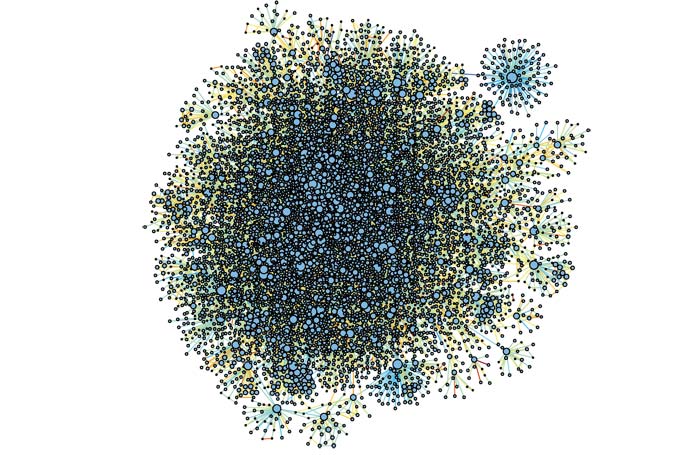Millions of human interactions were assessed during the study which included actions such as communication, founding and ending friendships, trading goods, sleeping, moving, however also starting hostilities, attacks and punishment. The game does not suggest any rules and everyone can live with their avatar (i.e. with their “game character” in the virtual world) as they choose. “And the result of this is not anarchy”, says Thurner. “The participants organise themselves as a social group with good intents. Almost all the actions are positive.”
“Exactly how people tick”
The interactions were fed into an “alphabet” by the researchers, “similar to how the genetic code of DNA was decoded 15 years ago”, says Thurner. “From this we get a pattern which reflects how people tick”. However, there is quite a high potential for aggression: so, for example, if a negative action is inflicted, the probability that the player will subsequently also act aggressively shoots up more than tenfold, even to about 30 percent. [continue reading…]
Communication

Static visualization of the social network of some of the persons speaking by phone (300,000 customers). Each circle is a customer and each line is a call between two customers. The network is very dense, a reflection of the small world of the social networks.
This study, which has analyzed around 9,000 million calls throughout almost a year period, is the first to identify these features of the communication process and to quantify their impact in the diffusion of information. “This is something very important in the processes such as the diffusion of commercial information, viral marketing and the market trends of products, but also in situations such as the spreading of rumours, opinions, policies, etc.”, explained one of the authors of this research, Esteban Moro,.
The study’s main conclusion, published in the scientific Journal, Physical Review E, is the finding that people communicate in bursts. In this way, our behaviour (in communication as well as in other activities) does not happen in a homogenous way over time, but rather there is universal behaviour in which there is no communication, followed by short intervals called bursts. “This aspect of human activity which has also been observed in other activities such as e-mail, web page visits and stock market operations governs communication between people,” , the researchers concluded. The effect of the bursts is that it slows down the information diffusion since the large periods of inactivity in the communication between two persons make it less likely that information is passed from one to the other. The study also highlights another important aspect of human communications: in group conversations, that is, although it is produced in bursts, these bursts happen at the same time among the members of the social group, which then accelerates information diffusion within these groups.
When, how much, and how do I communicate
The main objective of the research is to try to understand the temporal pattern of communication among persons in a social network. “As opposed to the static vision of a social network (who I interact with), our study seeks to understand when and how these social relations are produced,” Professor Esteban Moro elaborated. And with two purposes, the first being, to see if relations in a social network can be quantified better, that is, determine if the communication rhythm between two persons allows us to know something about the “strength” or characteristics of the relation (family member, acquaintance, friend, colleague, etc..); and the second, to investigate the impact of these rhythms on the propagation of information in social networks, in processes such as viral marketing, product recommendations, etc.
Source: Universidad Carlos III de Madrid – Oficina de Información Científica
My first born son was an early talker. I was drawn to this video for that reason.MIT researcher Deb Roy wanted to understand how his infant son learned language — so he wired up his house with videocameras to catch every moment (with exceptions) of his son’s life, then parsed 90,000 hours of home video to watch “gaaaa” slowly turn into “water.” Astonishing, data-rich research with deep implications for how we learn.
Source: TED
We know that people tend to be attracted to, date, and marry other people who resemble themselves in terms of personality, values, and physical appearance. However, these features only skim the surface of what makes a relationship work. The ways that people talk are also important. A new study published in Psychological Science, a journal of the Association for Psychological Science, finds that people who speak in similar styles are more compatible.
The study focused on words called “function words.” These aren’t nouns and verbs; they’re the words that show how those words relate. They’re hard to explicitly define, but we use them all the time—words like the, a, be, anything, that, will, him, and and. How we use these words constitutes our writing and speaking style, says study coauthor James Pennebaker of the University of Texas at Austin. [continue reading…]

